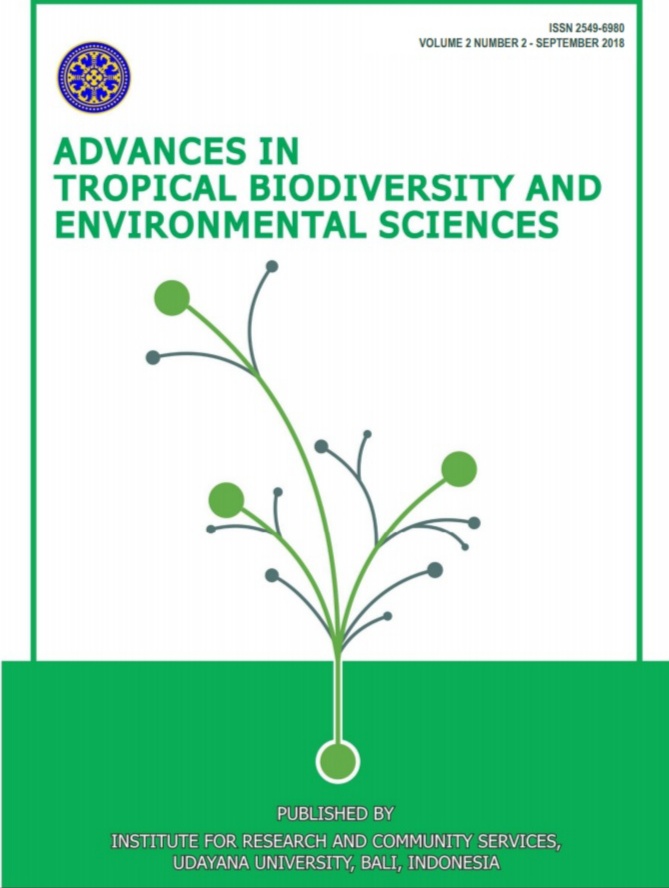The Daily Activities of Sun Bear (Helarctos malayanus, Ursidae) in Bali Animal Rescue Center
Daily Activities of sun bear
Abstract
Sun Bear (Helarctos malayanus) is found in Indonesia such as in Sumatra and Kalimantan. Helarctos malayanus is the smallest bear in the world and listed as vulnerable animal. Baloo is a sun bear that is rescued and raised at Bali Animal Rescue Centre located in Tabanan Bali. Before it will be released to the natural habitat, it is important to understand its behaviour, so it will be survived in their natural habitat. This study aimed to investigate the daily activity of sun bear rais at Bali Animal Rescue Centre. Research has been conducted at Bali Animal Rescue Centre from 2nd – 26th January 2019. Observation o daily activities of sun bear was conducted from 08.00 – 16.00 local time. It has been found that most of daily time was spent on grooming (35%), followed by feeding/eating (27%), moving (26%), and stationary (24%). Baloo has hardly found vocalized or defacate/urinate. Baloo was resting around 11.00 am and active feeding/eating along the day as well as moving. She moved a lot at 08.00 am, as she was provisioned by the carer, less moving in the middle of the day (12.00 am) and before resting at 17.00 pm. The variation of time spent on the daily activities of the sun bear at the rescue center can be used as reference before she will be release to its natural habitat.
Downloads
References
[2] Francis, C. M. 2008. A Field Guide to the Mamal of Thailand and South East Asia. New Holland Publisher. UK
[3] Ngabekti, S. 2013. Perilaku Beruang Madu Di Kawasan Wisata Pendidikan Lingkungan Hidup Kota Balikpapan. Jurnal Biosaintifika 5 (2): 114-120
[4] Schwarzenbergera F.,G. Fredriksson , K. Schallerc, L. Kolterd. 2004. Fecal steroid analysis for monitoring reproduction in the sun bear (Helarctos malayanus). Theriogenology 62:1677–1692
[5] Scotson, L., G. Fredriksson, D. Ngoprasert, W Wong, J. Fieberg. 2017. Projecting range-wide sun bear population trends using tree cover and camera-trap bycatch data. PLoS ONE 12(9): e0185336. https://doi.org/10.1371/journal.
[6] Freddriksson, G dan Redman, A. 2009. A Little Book about a Little Bear. KWPLH Balikpapan.
[7] Wong, W and M. Linkie. 2013. Managing sun bears in a changing tropical landscape. Diversity and Distributions 19: 700–709.
[8] Kaczensky, P., D. Huber, F. Knauer, H. Roth, A. Wagner & J. Kusa. 2006. Activity patterns of brown bears (Ursus arctos) in Slovenia and Croatia. Journal of Zoology 269: 474–485.
[9] Klinka, D. R. dan T. E. Reimchen. 2009. Adaptive coat colour polymorphism in the Kermode bear of coastal British Columbia. Biological Journal of the Linnean Society (98): 479–488.
[10] Herrero, S., T. Smith, T. D. DeBruyn, K. Gunther,
and C. A. Matt. 2005. From the Field: Brown bear habituation to people—safety, risks, and benefits. Wildlife Society Bulletin 33(1):362–373.













